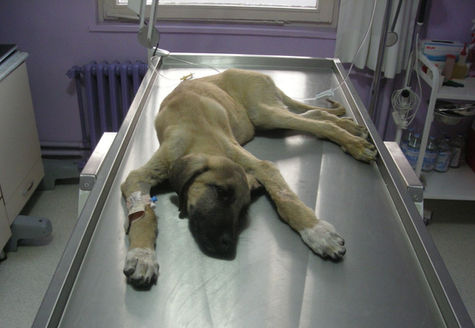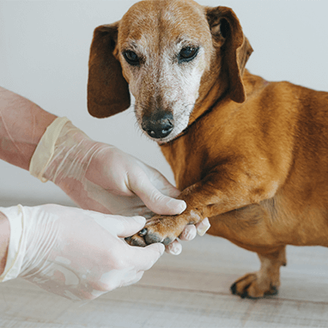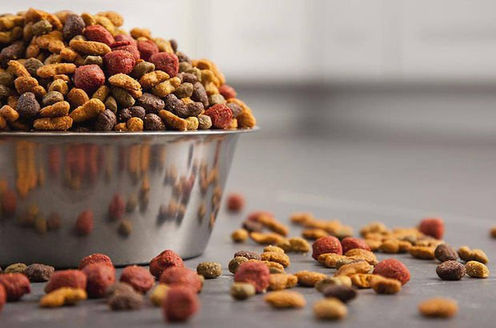
THE ART OF DOG BREEDING

Click to continue
FCI ROTTWEILER BREED STANDARDS
Page 1
INTERNATIONAL FEDERATION OF CINOLOGY (AISBL)
General Secretariat: 13, Albert Plaza 1* B- THuin (Belgium)
24.07.2018 /Translated from English; NIHAL ERGUN
FCI Standard No 147
ROTTWEILER
Page 2
TRANSLATION; Mrs. Chris Seidler. Modified by Peter Friedrich.
SOURCE: Germany
ANNOUNCEMENT DATE OF APPLICABLE ORIGINAL STANDARDS: 15.06.2018
UTILIZATION; Companion, Guide and Working dog..
FCI CLASSIFICATION: Group 2 Pinscher and Schnauzer-type, Molossian-type, Swiss Mountain- and Australian Shepherd dogs.
Section 2.1 Molossian type, Mastiff type..
working dogs
BRIEF HISTORY: Rottweiler is considered one of the oldest dog breeds. Its origin goes back to the Roman period. With their herding and guarding skills, they helped people in many matters. They are even known as the race that guided the herds of the Roman armies crossing the Alps and protected the people in the caravan. They encountered local dogs in the Rottweil region and mated with those dogs through natural crossbreeding. The Rottweiler's main duty thus became to protect the shelter of the herd, to herd the herd, and to protect their owners and assets. This breed took its name from the former independent town of Rottweil and became known as the "butcher dog of Rottweil". Butchers bred this dog breed for their performance and usefulness. These dogs were also used as harness dogs (to pull carts). In the early twentieth century, dogs of various breeds were needed for police services, and Rottweiler was among the breeds subjected to these breed selection tests. It soon proved that the Rottweiler was very suitable for police duties, and in 1910 the Rottweiler was officially recognized as a police dog.
Page 3
Rottweiler breeders aim for a dog that is very strong, has black fur with distinctive brown markings, has a strong appearance but also has nobility in this appearance and is extremely suitable as a companion, service and working dog.
GENERAL APPEARANCE: Rottweiler is a dog of medium to large build, loyal, neither heavy nor light, neither long-legged nor close to the ground. It has great strength, agility and endurance due to its correctly proportioned, tight and strong structure.
IMPORTANT PROPORTIONS: The length of the body from the sternum (breastbone) to the ischiatic tuberosity (inner hip joint) should not exceed the height of the point between the two shoulder blades by more than 15%.
BEHAVIOR/CHARACTER: Rottweiler is a natural guard dog with a good natured, calm nature, devoted to his family, obedient and willing to work. With his large appearance, he is self-confident, agile and fearless. Although he is always alert to his surroundings, he is also cool and calm.
HEAD
SKULL REGION;
Head Skeleton: Medium length, wide between the ears. When viewed from the side, the forehead line is slightly curved. The occipital bone is well developed, although not clearly visible.
Stop: Stop is quite strong. The frontal groove is not very deep.
FACE AREA; Nose: Well developed, wider than round with rather large nostrils and always black.
Mouth: The front of the face should appear neither lengthened nor shortened relative to the skull. The ratio between the length of the head skeleton and the length of the mouth is approximately 1 to 1.5. The flat nose bridge is wide at the beginning and tapers slightly towards the tip.
Page 4
Lips: Black, tightly closed, corner of mouth not visible, palate as dark as possible
Jaw/Teeth: The upper and lower jaw are strong and wide. It has 42 strong teeth that close like scissors. The upper front teeth close tightly over the lower front teeth.
Cheeks: The curve of the cheekbone is emphasized (prominent).
Eyes: Medium sized, almond shaped and dark brown in colour. The eyelids should be able to close tightly.
Ears: Medium sized, drooping, triangular and set apart. The fact that the ears are close to both sides of the head makes the head skeleton appear enlarged.
NECK: Strong, medium length, well-muscled, slightly curved, smooth, without a chin and without a laryngeal protrusion.
BODY:
Back: Straight, strong, tight.
Waist: Short, strong and deep.
Rump: (coccyx) Broad, medium length, slightly rounded. It is neither flat nor sunken.
TAIL: Under normal conditions, it appears strong and an extension of the top line; lifts up with a slight bend when paying attention, getting excited or moving; It can swing when relaxed. When between the legs, the tail extends almost to the hocks or stands slightly longer.
LIMBS:
Forequarters: In front view, the forelimbs are straight and not placed too close together. The forearm, when viewed from the side, extends straight and upright. The slope of the scapula has an angle of approximately 45 degrees when viewed horizontally.
Shoulders: They are thrown well back.
Upper arm: Close to the body.
Page 5
Forearm: It has a strong, developed and muscular structure.
Paste: Slightly flexible, strong but not upright.
Forefoot: Round, tight and fully curved, hard sole, nails short, black and strong.
REAR QUARTER: Viewed from behind, the legs are straight and not too close together. When the dog stands freely, an obtuse angle forms between the dog's hipbone and upper thigh, upper thigh and lower thigh, and lower thigh and metatarsal bone.
Upper thigh: Average length, wide and strongly muscled.
Lower thigh: Long, strong, wide-muscled and muscular.
Inner knees: Durable, properly angled, not upright.
Hindfoot: Slightly longer than forefoot. The toes are strong, curved and firm like those on the forefoot.
WALK: Rottweiler is a trotting dog. In movement, the back is straight and fairly stable. His movements are harmonious, serious, full of energy and unlimited with his long strides.
SKIN: The skin on the head is tight and fits snugly. When the dog pays attention to something, slight wrinkles may appear on its forehead.
FUR: FEATHER: Fur consists of upper fur and lower fur. The upper coat is of medium length, coarse, dense and straight. The underfur should not be visible from the upper fur. The hair on the back of the feet is slightly longer.
COLOR: Black, but with distinctive brownish rust-coloured markings on the cheeks, muzzle, neck, chest and legs, and above both eyes and below the beginning of the tail.
DIMENSION AND WEIGHT:
Withers height; 61-68cm for male dog. is
61-62cm short 63-64cm medium medium height
65-66cm high - correct height 67-68cm too high
Weight: 50 kg.
Page 6
Withers Height: 56-63 cm for female dog.
56-57cm short 58-59cm medium
height 60-61 cm high – correct height 62-63 cm too high
Weight: Approx. 42 kg.
DEFECTS
DEFECTS: Any defect from the above mentioned points is considered as a defect. Information regarding the seriousness of the defect, the degree of the defect, and the health of the dog is considered accurate.
General Appearance: Weak, skinny and long-legged appearance, weakness in bones and muscles.
Head: Hound dog style head structure, Narrow, weak, too short, too long or coarse head structure, Flat forehead (without a stop, a little stop, or a lot of stop)... very deep forehead line.
Face: Long, pointed or very short mouth structure, (a mouth shorter than 40% of the head length is added as very short.) Split nose, Arch nose (with a bulbous nose view), Bowl nose (with a hollow nose view), Beak nose, Pale colored or spotted nose (butterfly nose).
Lips: Sagging, pink or patchy, Lip characters are prominent.
Jaw: Narrow lower jaw. Bite: Teeth closing like pliers. Lower jaw molars not being in a line.
Cheeks: Too much processing. Eyes: Light-coloured, deep-set eyes, also very large and round eyes, and drooping eyelids.
Ears: Very low, distorted, long-standing, inverted ears, as well as ears that float a lot or are not carried symmetrically.
Neck: Very long, weak, muscleless neck structure, visible chin or larynx.
Body: Body structure that is too tall, too short or too narrow.
Back: Very long, skinny back structure, hunched or low back.
Haunch: Too curved, too short, too straight or too long.
Chest: Flat ribs or sleeve-shaped chest structure. Very narrow back.
Page 7
Tail: A tail carried too high or too low.
Front: Crooked front legs that are narrow or not parallel, shoulders that are too upright, elbows that are loose or weak. Upper arms that are too long, too short, or too straight, Weak or overly steep pasterns, Feet turned outward, Toes that are too straight or too curved, Deformed toes, Light colored nails.
Back: Flat hips, knees too close together, cow-like or beehive-shaped knees, joint angles too narrow or too wide, nail loss.
Skin: Wrinkles on the head.
Fur: Soft, too long, too short, wavy, lack of underlayer fur.
Colour: Wrong colored breed spots, unclear breed spots, very common breed spots.
SEVERE DEFECTS:
General appearance: Very bulky and heavy general appearance.
Skin: Obvious wrinkles on the scalp, deep wrinkles on the forehead, cheeks and corners of the mouth, prominent jowls.
Walking: Moving slowly at a trot.
DISQUALIFICATION FAILURES:
Dogs with a tough temperament or very shy Any dog showing any physical or behavioral abnormality should be disqualified.
Behavior: Anxious, shy, fearful, insecure, aggressive, overly suspicious and nervous animals.
General Appearance: Change of gender types, female-like males or male-looking females.
Teeth: Overshot (where the upper teeth completely cover the lower teeth) or Undershot (where the lower teeth completely cover the upper teeth) bite style, crooked mouth structure, missing one of the incisors, canines, premolars or molars.
Eyes: Entropion (eyelids turning inwards), Ectropion (lower eyelids turning inwards), Yellow eyes, Different colored eyes.
Tail: Curled tail, ring-shaped tail, distinctly tilted tail, naturally short tail.
Page 8
Coat: Too long or wavy fur
Color: Dogs that do not have the typical Rottweiler colors with brown spots on black, white spots.
FOOTNOTE:
Male dogs should have two normal-looking testicles that hang completely towards the scrotum. Only breed-approved, functional and clinically healthy dogs should be used in production.
FEDERATION CYNOLOGIQUE INTERNATIONALE (AISBL) SECRETARIAT GENERAL: 13, Place Albert 1er B – 6530 Thuin (Belgique)
WHAT IS GENEALOGY ?
WHAT DOES CERTIFICATE MEAN ?




Genealogy means family tree. A pedigree dog means a dog whose parents and further history are known and is “registered” with FCI and Dog Breeds Federation KIF.
We constantly see "Genealogy Baby" advertisements around, either with good intentions due to lack of information or with bad intentions. In these advertisements, sometimes the words "A Quality" puppies or "Certified" are used when introducing the dog.
We will explain in this article what it means for a baby to have a Genealogy.
In order for a baby born in our country to have a pedigree; His parents must be registered with the federation (KIF).
However, just registering the parents is NOT ENOUGH. Both parents must receive GOOD or higher (VERY GOOD, EXCELLENT) marks on the BREED RATING (in-competition or out-of-competition) by the FCI judges.
The offspring of unevaluated dogs will not be pedigreed, even if their ancestors are registered with the federation.
The mating of two dogs that have been evaluated and are registered to the federation and have earned a breeding permit based on the score they received, as well as the birth and control of the babies, must also be recorded. For this, a "mating agreement" must be drawn up during mating. This agreement should be sent to the association of the dog's breed or, if not, to the Federation office, and whether both dogs are suitable for matching and whether they are close relatives should be checked. If a "match is suitable" letter is received, the match should be made.
Afterwards, the babies must be seen under the mother's care and registered by the KIF Registration Authorities. The Federation Registration Officer comes to the Mother's location on the first 7th day. It checks and records how many female and how many male babies there are, and the health status of the babies. When the babies reach the 55th day, the KIF Registration Officer checks the babies again. It identifies and records healthy puppies. In the meantime, babies are microchipped. Microchip is a device with a barcode number on it, sent specifically for that baby by the Federation. This microchip is placed under the skin of the puppy under hygienic conditions by the Health Official. With the microchip reader, it is checked whether it is in the right place, whether it is placed, and whether the number is correct. This number belongs to this dog only. The same number is also found on the pedigree and vaccination certificate and cannot be changed. When a dog enters a competition or is lost or found, it is always checked with this microchip number.
Therefore, unless the steps detailed above and listed below are followed, your babies will have no pedigree.
When buying a puppy from people you don't know; If you are called a genealogist, please say that you would like to see the federation registration number, genealogy document and evaluation forms of the mother and father.
For Babies Born in Turkey to Have Genealogy;
a) Mother and father must be registered with the federation.
b) Both mother and father must have received at least a "good" grade in the breed evaluation.
c) A mating agreement must be drawn up and a fitness permit must be obtained.
d) Birth Confirmation Forms must be filled out (twice) by the registration authority.
e) Babies must be microchipped.
So why is genealogy important?
Just like in humans, inbreeding in dogs – especially close inbreeding – can lead to very serious physical and mental problems. For this reason; Genealogy is extremely important not only to beautify and keep the race pure, but also because it helps to give birth to healthy babies.
Let's not forget that all babies are beautiful, all dogs are dear. This article was written solely for the purpose of clearing up questions about "genealogy". You should ask someone who tells you that they have A Quality puppies, "Well, do they also have an A Pedigree certificate?" You should see the document, a sample of which is attached, with a microchip number on it, printed by the Dog Breeds Federation and sealed with a cold stamp. If it is not clear in your mind and you do not believe the people in front of you, you should call the Dog Breeds Federation and have the accuracy and microchip number of the document in question checked.
Pedigree offspring are also mated offspring from the same breeds with correct ancestors. For example, when you want to buy a Golden Retriever, only the Genealogy Certificate gives the answer to the question of whether all of its ancestors are Golden Retrievers or whether some of its ancestors mated with other breeds. You cannot know whether a Golden Retriever puppy without a Genealogy Certificate has dog blood with completely different characteristics in its ancestors, and probably there is. For this reason, in order to prevent such wrong breed matches, to prevent dogs from being bred by incompetent people, and to prevent them from growing under unhealthy conditions, when breeding by people who have been given breeding permission by FCI, who produce under the control of the Federation, and who make correct matches are preferred; The production of faulty, uncontrolled and unhealthy offspring will also be prevented.
The development of every accepted race and its transmission to future generations with the right blood is our responsibility.
When you are asked for a Quality A puppy, never forget to say yes, it should be of high quality, but I want to see the Genealogy Certificate.
If you believe that your previously acquired dog meets the standards of a breed, you can have your dog checked by KIF Referees and if the standards meet, it will be given Category B Pedigree. However, Category B certificate is given only to dogs that fully comply with the standards of their breed. You should never forget this either.
We wish you a nice day...
WHAT IS FCI ?

Fédération Cynologique Internationale
Fédération Cynologique Internationale (FCI) is an international federation representing purebred dog clubs and federations from more than 100 countries around the world.
The kennel club or federation of each country that is a member of the FCI operates in accordance with the rules and regulations of the FCI for the breeding, registration and exhibition of purebred dogs.
FCI serves as a central authority to coordinate international dog-related events and activities, breed standards, dog shows, tests and other competitions and to ensure harmony among organizations.
By uniting national dog clubs under a common roof, the FCI aims to promote the intact maintenance, health and welfare of purebred dogs while facilitating international cooperation and exchange of information between its member countries.
Daha fazla bilgi icin FCI' ın web sitesinden faydalanabilirsiniz:
WHAT IS KIF ?

Dog Breeds and Kinology Federation (KIF), founded in 2006, is the leading organization that carries out studies on all dogs in Turkey. Its main activity is to keep dog breeds intact by keeping the pedigree archives of local and foreign breed dogs, and in this sense, to transfer the dog breeds, which are the world cultural heritage, to future generations in a healthy way.
KIF is the only member in Turkey of FCI, the world's largest and most important organization operating on dog breeds, headquartered in Belgium. Therefore, KIF is the only organization authorized to represent our country in the world regarding cynology and dog breeds.
FCI (Fédération Cynologique Internationale) is the World Organization for Dog Breeds and Dog Related Issues. It has over a hundred members and contracted partners, one from each country, and each of them keeps its own pedigree, issues its own studbook documents for dogs bred in their country, and trains its own referees. FCI ensures mutual recognition and acceptance of referees in its member countries through pedigree documents.
One of the main objectives of our Federation is to register the local dog breeds of our country (including Kangal Shepherd Dog, Akbaş, Zerdava, Aksaray Malaklısı, Sultan Hound and other breeds) on behalf of our country in the international platform FCI, and in accordance with the international criteria accepted by FCI. ensuring that it is recorded.
The pedigree documents of dogs registered by our Federation are directly accepted by more than 100 FCI member countries in the world and the American Kennel Club (AKC), Canadian Kennel Club (CKC) and British Kennel Club (KC), which are partners with FCI.
Since the establishment of our Federation, registration organizations that form the basis of pedigree practice, breed standards evaluation organizations that are necessary for the control of production activities, breed standards conformity competitions and various seminars have been organized in many parts of the country on a scheduled basis.
In addition, the preparation of the breed standard and the gene map determination studies required to register the real and uncorrupted status of our native breeds with the FCI are making great progress. These studies have been completed for the Kangal Shepherd Dog and its registration with the FCI has been achieved as of 25.06.2018. Again, these studies have also been initiated for our other local breeds such as Akbaş, Zerdeva and Aksaray Malaklısı and significant progress has been made.
As a result of our work, the number of dogs registered in the KIF Stud Book is increasing rapidly every day. KIF continues its path by breaking new ground in our country for the protection of world heritage breeds by considering dog health and welfare.
For more information, you can visit KIF's website:
































